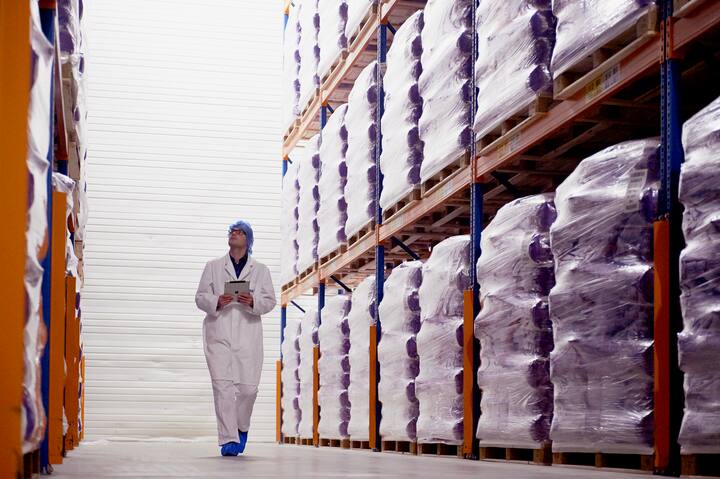
24 June 2025
Q&A with a Normec Foodcare Senior QA Advisor
Q&A with a Normec Foodcare Senior QA Advisor
From allergen management implementation to PAL
Q&A with a Normec Foodcare Senior QA Advisor
At Normec Foodcare, we have a department with QA advisors who work with customers on site every day to provide support with QA tasks in the broadest sense of the word. We also carry out internal audits and baseline measurements and provide advice. Ultimately, our goal is to help customers place their end products on the market in a food-safe manner and maintain their quality certification (if applicable).
Senior QA Advisor Tamara Kee
Our advisors receive many different QA questions. In this article, we share a number of practical questions about allergen management and allergen specialist and Senior QA Advisor Tamara Kee provides advice. She addresses questions about cleaning and how to know if you have cleaned sufficiently. She also discusses Precautionary Allergen Labelling and gives tips on when to use which type of allergen test.

How do you know if you have cleaned sufficiently?
A cleaning protocol is a standard document for companies. It is important for allergen management that the cleaning is also verified. You can check this visually, but for better substantiation, rapid tests are used for this purpose. These are available from Normec Foodlab for testing allergenic proteins. These tests can be used for some time and provide quick results. Take a worst-case scenario. Before you start, you must first identify which allergens are present in production and where they are located. A useful tool for this is to visualise this on a company floor plan. Identify where cross-contamination can occur so that you can use these as sampling locations, taking into account homogeneous cross-contamination or particles (nuts, pieces of dough). Focus on areas that are difficult to clean. Examples include waste disposal cabinets, dosing units on a production line, weighing stations and transport. Check what remains visually after cleaning and whether these areas can be cleaned more effectively, for example by making technical adjustments. Then carry out a validation for each type of cleaning used.
How do you know whether that amount leads to PAL or not?
PAL (Precautionary Allergen Labelling) may only be included on the label or product specification if there is a real risk to allergic consumers. The risk must be demonstrable.
The starting point must be the prevention of cross-contamination. If, after all possible adjustments and prevention measures have been taken, the amount of allergens present still exceeds the safe limit, PAL may be applied. How to compare the total cross-contamination with the safe limit is set out in the Cross-Contamination Allergens Guidelines.I sometimes encounter customers who are already conducting a risk assessment without first checking whether cross-contamination can be prevented. If you want to calculate how many protein allergens you are actually dealing with, you can use the raw material specifications and recipe. If quantitative information is missing from a specification, you can make your own assumptions or estimate the amount of protein allergen. You may find that you are already below the reference values. Ultimately, you will need to record all of this in a report and substantiate it.
Allergen management white paper
Prepare well
Do you have questions about preparing for the new allergen policy or are you encountering any issues? We are happy to help. Would you like to learn more about allergen management and how you can guarantee the safety of your products? Download our free white paper on allergen management and discover practical tips and insights that you can immediately apply to your business operations. The following topics are covered:
Allergen management over time
The impact of allergens from products and processes
Concrete steps for a successful allergen management system

How can you avoid analyses that don't tell you anything?
Which allergens should I test for? After implementing an allergen-based production schedule, validated cleaning protocols, and the use of correct recipes and complete raw material information, you can analyse how much protein allergen residue remains on the line. This amount of protein allergen can cause cross-contamination to the next allergen-free product. In a bakery, almost all end products contain the allergen wheat, but not every product will also contain nuts. This means that if we want to produce nut-free products, we need to know whether nut protein is present in the nut-free product after cleaning a product that contains nuts.When do I use which type of test?My customers often ask me: 'Which test should I use and when? Unfortunately, a test has not yet been developed for every allergen, but an ELISA is available for the most common allergens. An ELISA test provides a precise measurement of the allergen protein in products. For this, the amount must fall within the measurement range of the test. Compare the result of the theoretical allergen cross-contamination calculation with the lab analysis of the product for the protein allergen in question. This is usually expressed in ppm or mg/kg. Repeat this test regularly. Always use a worst-case scenario for your validation.
How do you know what you are measuring?
I have more than 100 products, do I have to perform 100 quantitative risk analyses? The answer is “no”. Start with:
Clustering product groups
Clustering groups with the same process
Clustering groups with the same consumption size
Then identify where cross-contamination occurs in the process so that you know which analyses to use. Calculate the theoretical amount of cross-contamination in advance based on raw material specifications and recipes so that you know what you are going to measure and can use the right test.
Take into account the LOQ (reporting limit), which is the lowest concentration of a substance that can be quantitatively analysed.